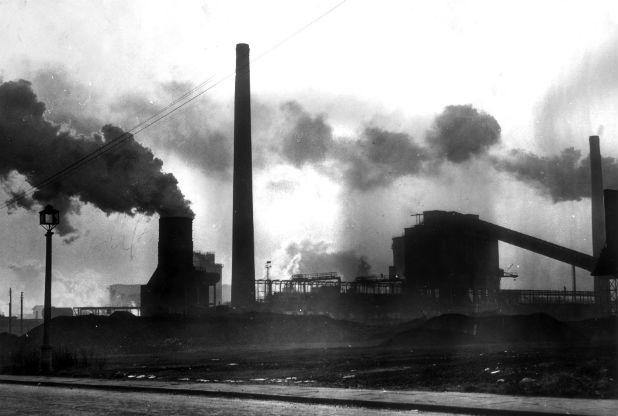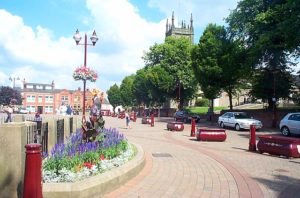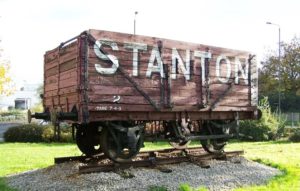Ilkeston is a town within the Borough of Erewash, in Derbyshire, England. It sits next to the River Erewash, has a population of about 39,000, and is close to both Derby and Nottingham.
Ilkeston’s major industries were traditionally coal mining, iron working and lace making / textiles, but these have all but disappeared in the last few decades.
One of the biggest and most important local employers was the Stanton Ironworks, later known as Stanton and Staveley – the continuation of a long-standing tradition of iron working in this area. There has been evidence of iron working and quarrying in the area since Roman times, and the industry began blossoming in the 1780s.
By the mid-19th century there were several blast furnaces and the production rose from around 500 tons of pig iron per month to 7,000 at the end of the century. Steel pipe manufacturing began at Stanton after World War I and later concrete pipes were produced, Stanton being the first in the UK to develop the ‘spun pipe’ process.
In the mid-19th century the works produced 20,000 tons of iron castings per year, 2.5 millions by 1905. Up to 12,500 people were employed during the period when the works were part of British Steel Corporation, of which 7,000 worked at the Stanton works.
During its long existence the works produced huge quantities of a variety of products, including pig iron, tunnel castings, (used in projects such as the London Underground), pipes and street furniture as well as bitumen, roadstone, chemicals and munition casings. It is likely that if you live in the UK, you are not far away from a S&S manhole cover or lamp post.
The works gradually declined, the business being run from 1985 by the French Saint-Gobain Group. The last casting was an emotional event in 2007.
On January 19, 2017, the Erewash Borough Council formally adopted a plan for regenerating the site of the historic Stanton Ironworks. The plan is called the Stanton Regeneration Site SPD.
Revival of this industrial wasteland was backed in the hope that it would bring both employment and residential development to the town, with jobs being the more desperately needed of the two.
The SPD, which now forms part of the Erewash Local Development Framework (LDF), will play a key role in raising the profile of the Stanton Regeneration Site – contributing towards its comprehensive redevelopment in line with relevant policies from the Erewash Core Strategy. It allocates areas for 2,000 homes, a business park, industry, school and shopping complex.
Conservative council leader Chris Corbett said builders would want to provide homes – while jobs were also vital. “Developers want houses because there is more money to be made; we want employment to provide jobs. It is a balancing act,” he said.
The document offers prospective developers’ informative guidance and clarity over what the Borough Council expect redevelopment proposals to make provision for. Central to the SPD is its land-use Masterplan.
This establishes suitable locations for the various development uses on site, sets out how development (including land remediation) should be phased and details what contributions the different phases of development should make towards infrastructure. With the SPD forming part of the Erewash LDF, the content of the document now constitutes a material consideration in the determination of future planning application(s).
Historic photo of Stanton Ironworks in 1967 by Anonymous.
See article by Rod Malcolm in the Nottingham Post.




